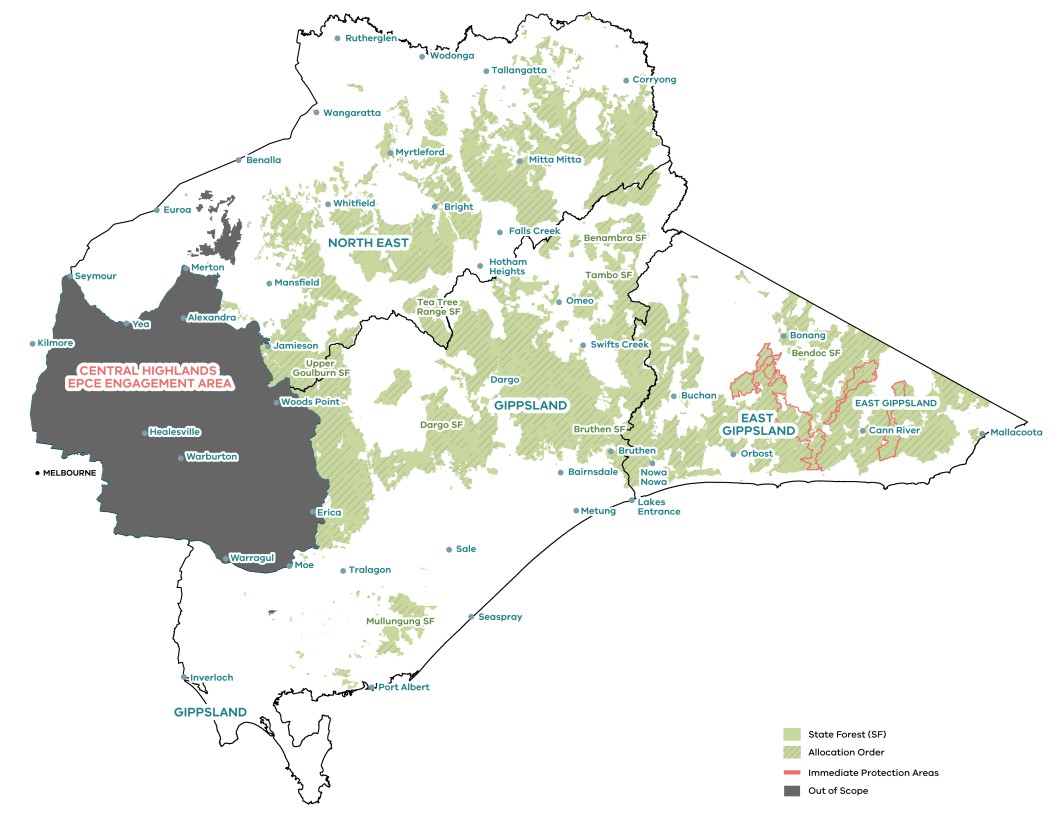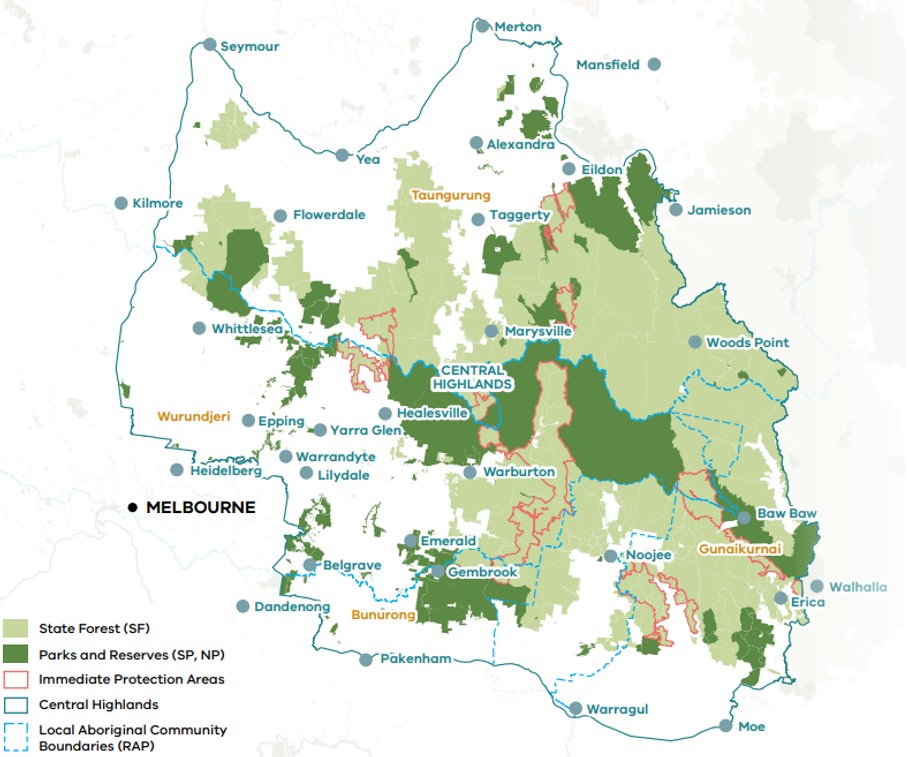Future forests
Victoria is home to some of the most impressive forests in the world. They provide habitat for unique animals and plants that are not found anywhere else, provide high quality water and substantial carbon storage, and are a much-loved backyard for Victorians and visitors to explore.
Commercial native timber harvesting in Victoria’s state forests ended 1 January 2024.
The end of native timber harvesting presents a landmark opportunity to consider how over 1.8 million hectares of forest is managed to provide shared benefits into the future. This includes identifying opportunities to encourage more Victorians and visitors to Victoria to experience nature and build regional economies, while also protecting forest values and supporting Traditional Owner self-determination.
The Victorian Government wants to hear from forest users about how to best manage forests into the future.
Great Outdoors Taskforce
To inform the future use and management of more than 1.5 million hectares, a Great Outdoors Taskforce has been established.
The former Minister for Environment, the Hon Lisa Neville, is leading the Taskforce, which is consulting with the Victorian community to provide recommendations to government about the future use of state forest previously managed for timber harvesting (outside the Central Highlands area) – the largest single public land assessment ever undertaken in Victoria.
The Taskforce will make recommendations to government to ensure shared benefits for all Victorians – focusing on building regional economies, maximising tourism and recreation opportunities, while also protecting forest values and supporting Traditional Owner self-determination.
This includes:
- identifying opportunities to protect the environment and support recreation, social and economic outcomes
- identifying opportunities for Traditional Owner management
- identifying areas of state forest where recommendations can be made now
- advising on where more partnership and engagement work needs to be done.
The Taskforce is partnering with Traditional Owners in its work.
The Taskforce is different to the Eminent Panel for Community Engagement, which has been working with communities in the Central Highlands, Strathbogie Ranges and Mirboo North since 2022.
As part of this work, the Victorian Environmental Assessment Council is conducting a scientific values assessments to support understanding of forest values. The Taskforce has sought economic, recreation and Country biocultural values assessments. These are all just some of the inputs the Taskforce will consider in making its recommendations.
The existing responsibilities of the Department of Energy, Environment and Climate Change to manage bushfire risk under the Forests Act 1958 are not in scope of the Taskforce’s work.
More information about engagement opportunities are in Latest news.

Central Highlands state forests
The Eminent Panel for Community Engagement, established in 2021 to consider future use of Immediate Protection Areas, has finalised its engagement process in the Central Highlands state forests. The panel undertook community engagement to help determine the future use and management of Central Highlands state forests.
The Panel spoke to over 1,000 people at 60 engagement sessions, and received over 14,000 responses to their consultation on Victoria’s Central Highland forests.
The Victorian Government is currently considering the panel's report. Read the latest information on the Eminent Panel’s work.

Strathbogie Ranges and Mirboo North
The Eminent Panel’s report for Mirboo North and Strathbogie Ranges Immediate Protection Areas was completed in 2022. The Victorian Government is currently considering its response.
Page last updated: 17/02/25